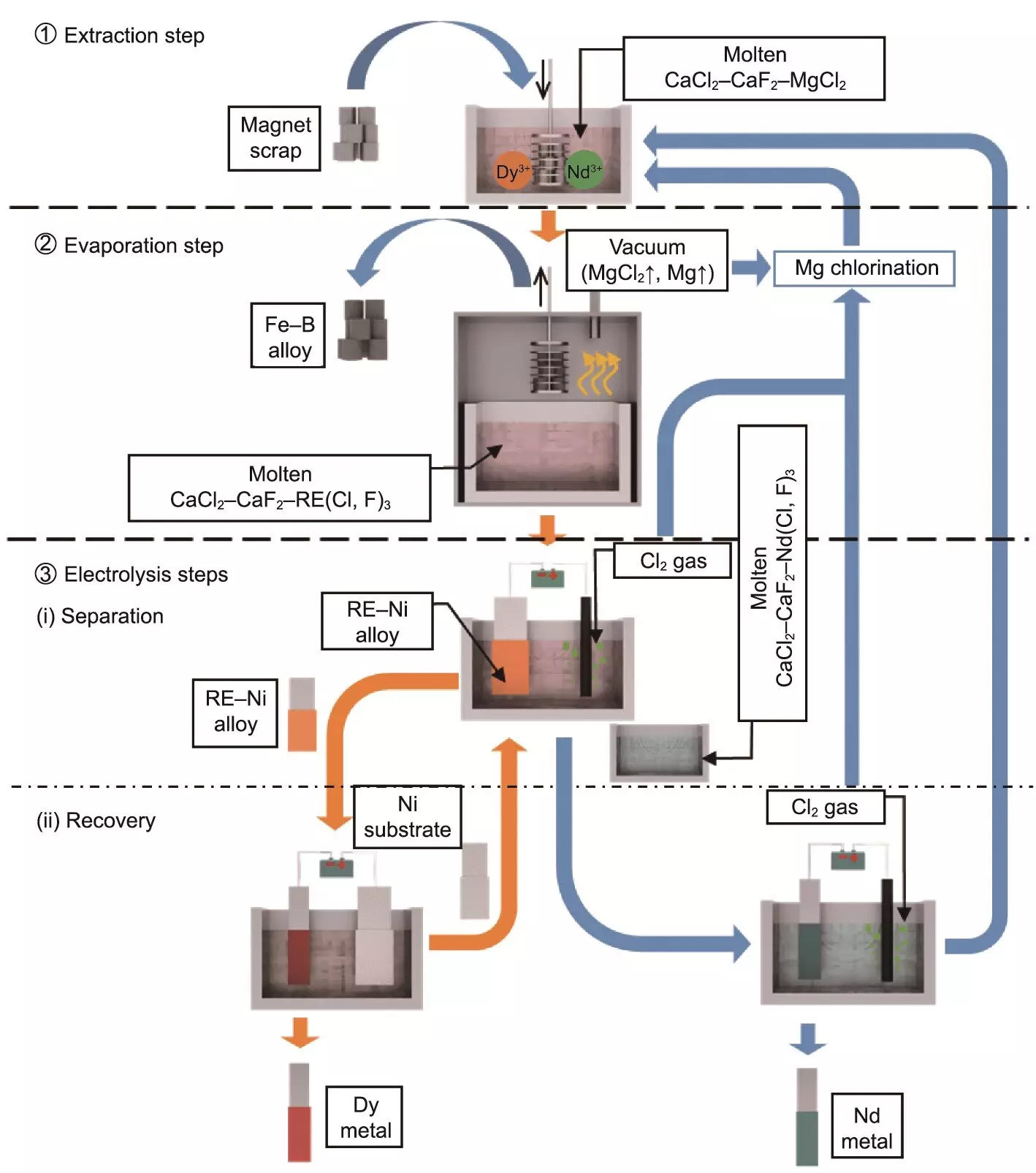As the world grapples with the accelerating demand for eco-friendly technologies, the necessity for sustainable recycling methods has become increasingly urgent. Rare-earth elements (REEs), particularly neodymium (Nd) and dysprosium (Dy), play a pivotal role in the manufacture of high-performance magnets found in cutting-edge technologies like electric vehicles (EVs) and wind turbines. However, the conventional recycling processes are often inefficient and environmentally damaging, leading researchers to explore innovative alternatives. Recent advancements from Kyoto University’s Institute of Advanced Energy have resulted in the development of a groundbreaking process known as selective extraction–evaporation–electrolysis (SEEE), which promises to reshape the landscape of REE recycling.
The SEEE process represents a streamlined and sustainable approach to recycling, designed specifically for the recovery of Nd and Dy from end-of-life magnets. Spearheaded by Professor Toshiyuki Nohira and his research team, this method is distinguished by its efficiency and minimal environmental footprint compared to traditional hydrometallurgical techniques.
The process unfolds in three main stages:
1. **Selective Extraction**: This initial phase utilizes a molten salt mixture consisting of calcium chloride (CaCl2) and magnesium chloride (MgCl2) to extract REEs from magnet scraps. The inclusion of calcium fluoride (CaF2) is particularly noteworthy, as it aids in controlling evaporation loss during the extraction phase, enhancing overall efficiency.
2. **Selective Evaporation**: Following extraction, the process transitions into a selective evaporation phase that removes residual extraction agents and byproducts, thereby concentrating the desired REEs. This step is crucial for maximizing the eventual yield of pure metals.
3. **Selective Electrolysis**: The final phase employs electrochemical methods to separate the extracted REEs based on their distinct electrochemical potentials. This phase is critical for achieving high-purity outputs of neodymium and dysprosium.
Through these meticulously engineered stages, the SEEE process has demonstrated impressive recovery rates—96% for Nd and 91% for Dy—while achieving purities exceeding 90%. Such performance not only underlines the process’s efficiency but also positions it as a stronger alternative to existing recycling methods.
As global markets shift towards sustainable energy solutions, the importance of effective recycling solutions cannot be overstated. The SEEE process serves multiple critical purposes: it not only facilitates the recovery of essential minerals but also significantly reduces reliance on new mining operations that can lead to adverse environmental consequences. As such, adopting this innovative technique could safeguard both natural resources and environmental health, addressing the delicate balance of technological advancement and ecological preservation.
The adaptability of the SEEE process further amplifies its potential impact; while currently focused on Nd magnets, researchers believe it could be extended to nuclear fuel reprocessing, which could diversify its applications. These insights underscore the need for additional research to refine and optimize the process for broader industrial applications.
Despite the promising results associated with the SEEE process, researchers recognize that hurdles remain. There is a pressing need for extensive technical examination and development before this method can be widely commercialized. The transition from laboratory success to productive industrial application is fraught with challenges that will require diligent exploration.
Nonetheless, the research at Kyoto University highlights a pivotal advancement within the realm of material recycling. By aligning technological progress with global sustainability goals, the SEEE process embodies an essential stride toward addressing the escalating challenges of REE recycling.
In an age where innovation and environmental consciousness must coincide, Kyoto University’s SEEE process stands out as a beacon of hope for efficient rare-earth element recycling. This novel method not only promises to meet the increasing demand for critical metals but also reinforces the necessity of sustainable practices within the recycling sector. As the push for a carbon-neutral future accelerates, it is initiatives like these that will play an instrumental role in shaping a more sustainable and resource-efficient world.

